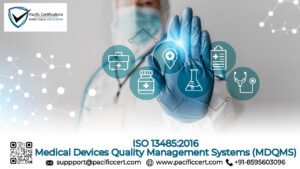
ISO/TS 18152:2010 Ergonomics of Human-System Interaction – Specification for the Process Assessment of Human-System Issues
ISO/TS 18152:2010 is a specification that covers the process assessment of human-system interactions. This article will provide a brief overview of this standard and how it can be used to help assess the usability of a system. Additionally, this article will discuss some common issues that arise during the process of human-system interaction, and how ISO/TS 18152:2010 can be used to help address them.
What is ISO/TS 18152:2010?
ISO/TS 18152:2010 is a specification for the process assessment of human-system issues. It provides a common framework for the evaluation of human-system interactions and helps to ensure that human-system interactions are efficiently and effectively managed.
It is based on the principles of system management and process analysis, and it provides a comprehensive approach to the evaluation of system performance.
The specification provides guidance for the assessment of six key human-system interactions: information management, process control, communication, knowledge management, work environment, and task performance.
Therefore, Each interaction is evaluated using five process indicators: feasibility, effectiveness, efficiency, safety, and adaptability. The results of the evaluations are used to improve system performance.
What are the Requirements of this standard?
It is a standard that defines the requirements for the process assessment of human-system interactions. The requirements of this standard are based on the needs of industry and other stakeholders.
The process assessment of human-system interactions requires the use of appropriate methods and tools. In fact, ISO/TS 18152:2010 specifies the requirements for the use of appropriate methods and tools for process assessment.
Moreover, This Standard provides a framework for process assessment. This framework includes four stages: problem identification, assessment, optimization, and monitoring and control. The four stages are described in detail in ISO/TS 18152:2010.
It is a standard that defines the requirements for the process assessment of human-system interactions. The requirements of this standard are based on the needs of industry and other stakeholders.
The process assessment of human-system interactions requires the use of appropriate methods and tools. Therefore, ISO/TS 18152:2010 specifies the requirements for the use of appropriate methods and tools for process assessment.
What are the benefits of this standard?
It is a process assessment standard that addresses human-system issues. Thus, It provides a framework for understanding and analyzing the impact of human factors on systems and processes.
The benefits of ISO/TS 18152:2010 include the following:
It helps to improve the reliability and adequacy of systems and processes.
It helps to identify problems early on, which can lead to cost savings and faster execution of projects.
It helps to ensure that systems and processes are configured in a way that is consistent with customer requirements.
Also, It provides a foundation for improving communication between people and systems.
It provides a basis for developing training programs for employees who work with systems and processes.
It provides a basis for benchmarking systems and processes against best practices.
It supports research into human-system interactions in order to improve our understanding of how people interact with systems and how systems affect people.
So, If you need more support with ISO/TS 18152:2010, please contact us at +91-8595603096 or support@pacificcert.com
Read About : ISO 9407






